Disclosure: This article contains affiliate links. We may earn a commission from purchases at no extra cost to you, which helps our travel content.
When most people think of Rio de Janeiro, images of golden sand beaches and samba dancers immediately come to mind. But during my recent winter visit to this vibrant Brazilian metropolis, I discovered that Rio's true magic extends far beyond its famous coastline. As someone who seeks out the cultural heartbeat of every destination, I was delighted to find that Rio's outdoor adventures offer a unique window into both the natural landscape and the carioca spirit. From the lush Atlantic rainforest that embraces the city to the dramatic granite peaks that define its skyline, Rio offers a playground for adventure seekers that few urban destinations can match. Join me as I share seven thrilling outdoor experiences that revealed the soul of this magnificent city in ways that a beach towel and caipirinha never could.
Hiking the Peaks of Tijuca National Park
My love affair with Rio's wild side began in Tijuca National Park, the world's largest urban rainforest. As an educator always seeking authentic experiences to share with my students, I was drawn to this ecological treasure nestled within city limits—a perfect example of how nature and urban development can coexist.
On a crisp winter morning, I joined a small guided hike to Pico da Tijuca, the park's highest summit at 1,021 meters. The trail winds through dense Atlantic rainforest, where our guide pointed out over 30 species of birds and several small monkeys swinging through the canopy. The biodiversity here is staggering—a living classroom I've since incorporated into my school's science curriculum.
What struck me most was the transition from humid forest to exposed rock face as we approached the summit. The final ascent requires some basic scrambling techniques, making the panoramic view at the top feel genuinely earned. Standing there, with the entire city sprawled below—from the iconic Christ the Redeemer statue to the distant beaches of Ipanema—I gained a new perspective on Rio's unique geography.
For those seeking a less strenuous option, the trail to Pico do Papagaio (Parrot's Peak) offers similar rewards with a gentler climb. I recommend bringing a hydration pack as the humidity can be deceptive even in winter months.
The park contains numerous other trails varying in difficulty, but what makes Tijuca truly special is its accessibility—just a 20-minute drive from Copacabana, yet worlds away from the urban hustle.
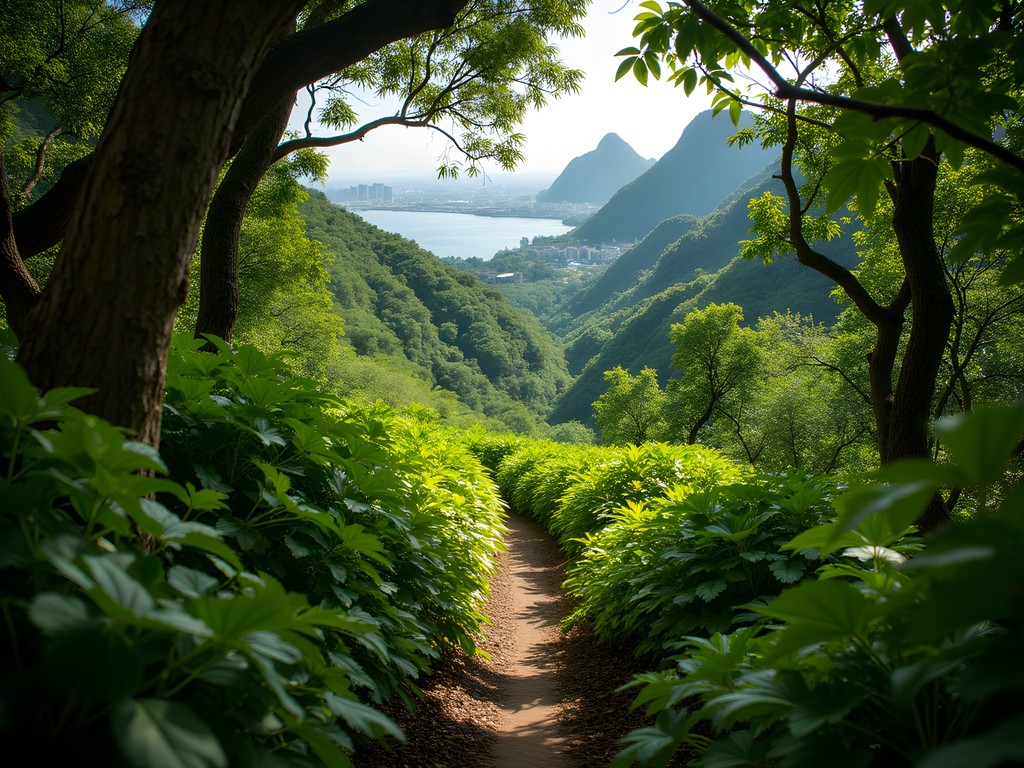
💡 Pro Tips
- Start early (around 7-8am) to avoid afternoon rain showers common even in winter
- Hire a local guide through your accommodation for the best experience and cultural insights
- Pack a light lunch to enjoy at one of the many stunning viewpoints
Rock Climbing the Granite Giants
Rio's dramatic granite monoliths aren't just for admiring from afar—they're a world-class playground for rock climbers. Having developed a passion for climbing during my travels in Thailand, I was eager to test my skills on Rio's unique formations.
Sugarloaf Mountain offers over 270 established climbing routes, but as an intermediate climber, I opted for a guided experience on the less intimidating but equally stunning Morro da Urca. My guide Paulo, a third-generation climber whose grandfather pioneered routes in the 1940s, shared fascinating stories about the evolution of climbing culture in Rio.
"Climbing here is not just a sport," Paulo explained as we ascended a moderate multi-pitch route, "it's part of our cultural identity—the way we connect with our landscape."
The 2-3 hour climb offers constantly changing perspectives of Guanabara Bay, with cruise ships appearing like toys below and paragliders drifting at eye level as you ascend. The rock quality is exceptional—solid granite with positive holds that build confidence with every move upward.
For beginners, the climbing schools at Urca and Babilônia offer single-pitch routes with top-rope setups. More experienced climbers should not miss the classic routes on Corcovado or the challenging faces of Pedra da Gávea.
I recommend investing in a good pair of climbing shoes before your trip, as rental equipment quality can vary. However, helmets, harnesses, and other technical gear are best rented from reputable local outfitters who maintain their equipment for the specific conditions of Rio's granite.
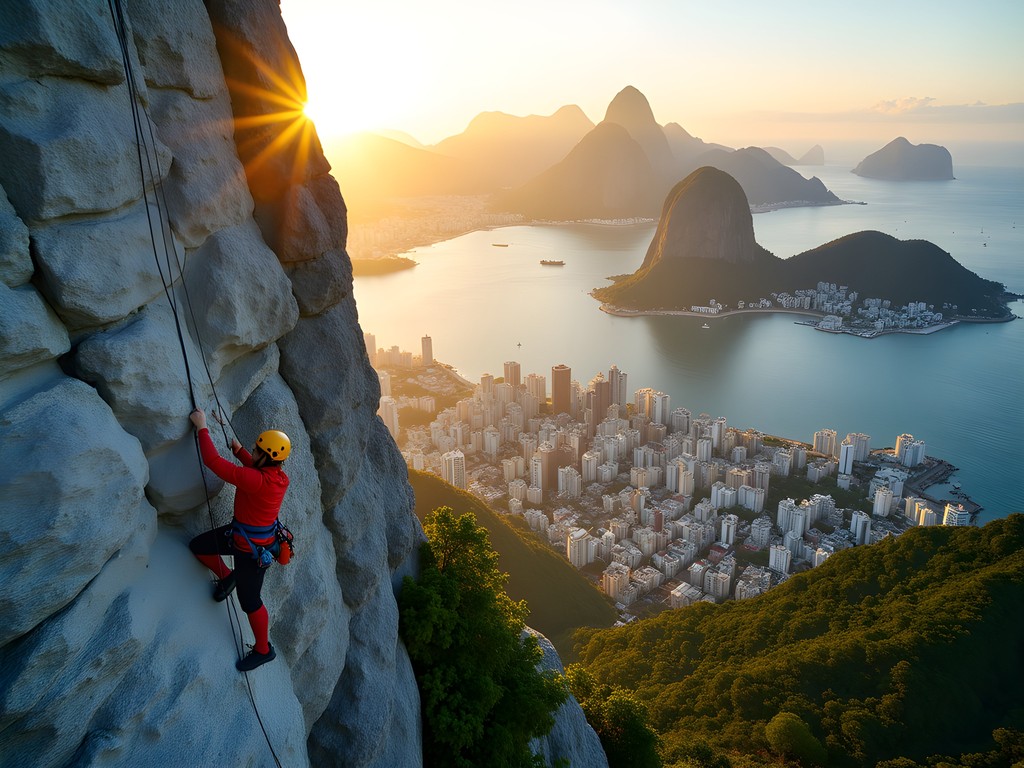
💡 Pro Tips
- Book with certified guides who speak your language and understand your experience level
- Schedule climbs for early morning to avoid afternoon heat, even in winter
- Bring a small camera that can be secured to your harness—the mid-climb views are incredible
Paragliding from Pedra Bonita
"Take a deep breath and just keep walking forward," my tandem pilot Miguel instructed as we stood at the edge of Pedra Bonita's 520-meter launch platform. The rational part of my brain questioned the wisdom of deliberately walking off a cliff, but my curiosity about traditional Brazilian flight methods—which I'd been researching for a cultural education module—pushed me forward.
In seconds, we were airborne, catching thermal currents that carried us over the lush Tijuca Forest below. The sensation is unlike anything I've experienced—a peaceful glide rather than an adrenaline-fueled plunge. As we soared above São Conrado beach, Miguel explained how paragliding has evolved from a fringe sport to a beloved cultural tradition in Rio, with knowledge passed down through generations of pilots.
"We learn to read the air currents the way fishermen read the sea," he said, pointing out invisible thermal patterns that kept us aloft for nearly 30 minutes.
The flight offers unparalleled photo opportunities of Rio's geography—the meeting of mountain, forest, and ocean that makes this city so unique. I couldn't help but draw parallels to textile patterns I'd studied in India, where natural landscapes similarly influence artistic expression.
Flights typically last 20-30 minutes and end with a gentle landing directly on São Conrado beach, where you can immediately celebrate your adventure with a fresh coconut water from a beachside vendor.
While no experience is necessary for tandem flights, I recommend wearing comfortable layers and securing your belongings in a waterproof pouch for peace of mind. Most companies provide GoPro footage of your flight, but the memory of floating silently above one of the world's most beautiful cities needs no digital enhancement.
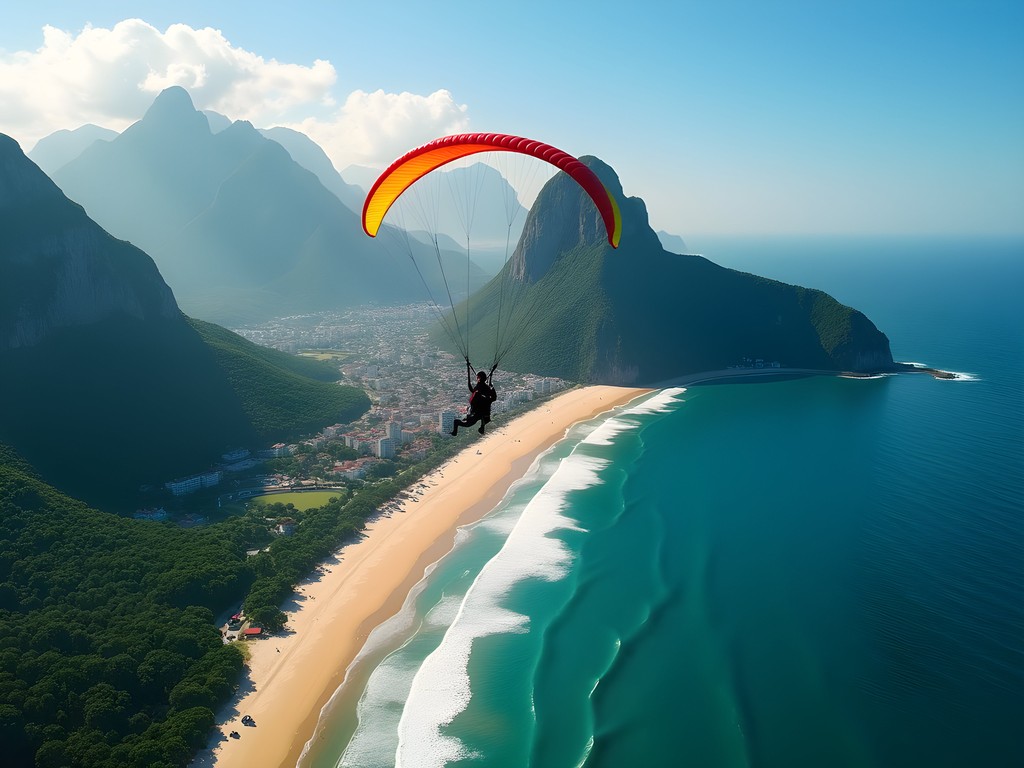
💡 Pro Tips
- Book your flight for morning hours when air currents are most stable, especially in winter
- Wear closed-toe shoes that won't fall off during flight
- Consider taking anti-nausea medication if you're prone to motion sickness
Mountain Biking Through Tijuca Forest
The network of trails threading through Tijuca Forest offers some of the most accessible yet thrilling mountain biking I've experienced in an urban setting. After connecting with local bike shop owner Thiago through a textile artist I'd met at a cultural market, I joined a small group for a guided ride through the forest's western sector.
"These trails tell the story of Rio's environmental recovery," Thiago explained as we pedaled along paths once used by coffee plantation workers in the 19th century. "This was completely deforested 150 years ago for coffee and sugar production. What you see now is the world's largest human-planted forest."
This historical context added layers of meaning to our ride, transforming it from mere recreation to a journey through Brazil's complex relationship with land and resources—themes I often explore with my students when discussing sustainability.
The winter conditions were perfect—cooler temperatures and firmer trails after the previous day's light rain created ideal traction for navigating the mix of smooth fire roads and technical single-track sections. The intermediate routes feature moderate climbs rewarded by exhilarating descents through lush vegetation, with occasional clearings offering spectacular views of Christ the Redeemer and Guanabara Bay.
Wildlife encounters add to the experience—we spotted toucans, marmosets, and even a family of capybaras near one of the forest's many waterfalls, where we stopped for a refreshing break. The juxtaposition of pristine nature against the backdrop of a metropolis of 13 million people creates a riding experience unlike any other.
Most guided tours provide quality full-suspension mountain bikes, helmets, and basic repair kits. I recommend bringing your own padded cycling shorts for comfort on longer rides, as well as a small daypack for carrying water and snacks.

💡 Pro Tips
- Choose tours based on your actual experience level—Rio's trails can be deceptively technical
- Apply eco-friendly insect repellent before starting your ride
- Bring a small microfiber towel for cooling off at waterfall stops
Surfing the Urban Breaks
While Rio's beaches are famous for sunbathing and people-watching, they also offer surprisingly good surf breaks that reflect the city's democratic approach to outdoor recreation. Unlike many world-class surf destinations that require remote travel, Rio's waves break right alongside urban neighborhoods, making the sport accessible to all socioeconomic levels—something I found both refreshing and aligned with my educational philosophy of accessibility.
Arpoador, the rocky peninsula between Ipanema and Copacabana, is where I took my first Rio surf lesson. This iconic point break is where surfing culture took root in Brazil in the 1960s, and the community vibe remains strong today. My instructor Marcos, whose family has taught surfing here for three generations, provided cultural context alongside technical instruction.
"In Rio, surfing is not just for tourists or the wealthy," he explained as we paddled out on a crisp winter morning. "Kids from the favelas surf alongside doctors and lawyers—the ocean is our great equalizer."
Winter (June-August) brings consistent swells to Rio's beaches, with Arpoador and Prainha offering the most reliable conditions. The water temperature remains surprisingly comfortable around 70°F (21°C), though I was glad I'd packed my rash guard for added warmth during longer sessions.
For beginners, the gentle beach breaks at Barra da Tijuca provide an ideal learning environment, while more experienced surfers should head to Prainha or Grumari for challenging reef breaks. Regardless of your skill level, surfing in Rio offers a unique blend of urban convenience and natural beauty—where else can you catch morning waves and be sipping coffee at a world-class museum by afternoon?
Board rentals and lessons are readily available at all major beaches, with prices significantly lower than equivalent services in the US or Australia. The instructors often provide fascinating insights into local culture and history, making the experience educational as well as physical.
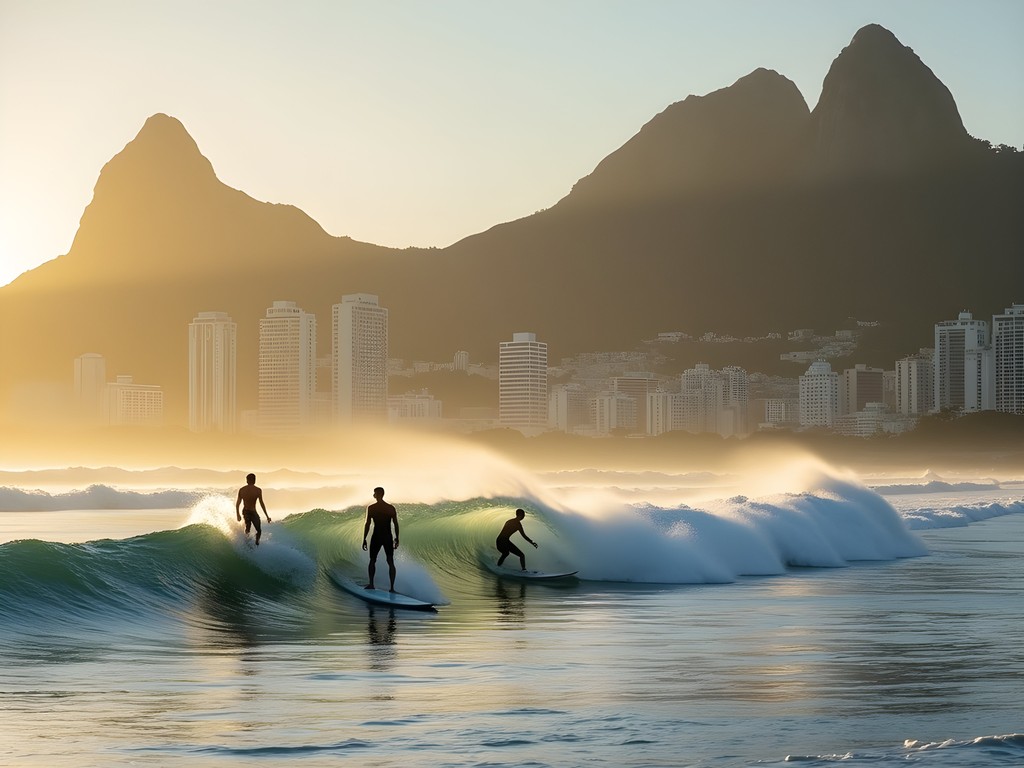
💡 Pro Tips
- Start early (before 8am) to enjoy cleaner waves and fewer crowds
- Learn basic Portuguese surf terminology to better communicate with local instructors
- Respect the local hierarchy in the lineup—Rio surfers appreciate visitors who observe etiquette
Sailing Guanabara Bay's Historic Waters
For a perspective of Rio that combines adventure with historical context, I joined a small-group sailing excursion on Guanabara Bay. These waters have witnessed centuries of Brazilian history—from Portuguese colonization to the 2016 Olympic sailing competitions—making the experience deeply meaningful for someone like me who seeks to understand a place through its historical narratives.
Our captain, Luiza, represented a new generation of female sailors breaking into this traditionally male-dominated activity. As we tacked across the bay on a sleek 40-foot yacht, she shared stories of the bay's environmental challenges and restoration efforts, pointing out colonial forts, tiny islands, and the flight paths of frigatebirds that have remained unchanged for centuries.
"These waters connect all of Rio's history," she explained as we sailed past the 16th-century Fortaleza de Santa Cruz. "From indigenous canoes to Portuguese galleons to modern container ships—the bay has always been Rio's connection to the wider world."
The winter conditions provided perfect sailing weather—steady breezes around 10-15 knots and minimal afternoon thunderstorm risk compared to summer months. The cooler temperatures also meant clearer visibility, with Sugarloaf Mountain and Christ the Redeemer appearing dramatically against the winter sky.
Most sailing tours include stops at Ilha Fiscal (with its neo-Gothic castle that hosted the Brazilian monarchy's last ball) or Ilha de Paquetá (a car-free island where time seems suspended). Some tours offer opportunities to swim in protected coves, though I recommend checking current water quality reports before taking the plunge.
While no sailing experience is necessary for these tours, I found my polarized sunglasses essential for reducing glare off the water and spotting marine life, including the occasional dolphins that have returned to the bay as cleanup efforts progress.
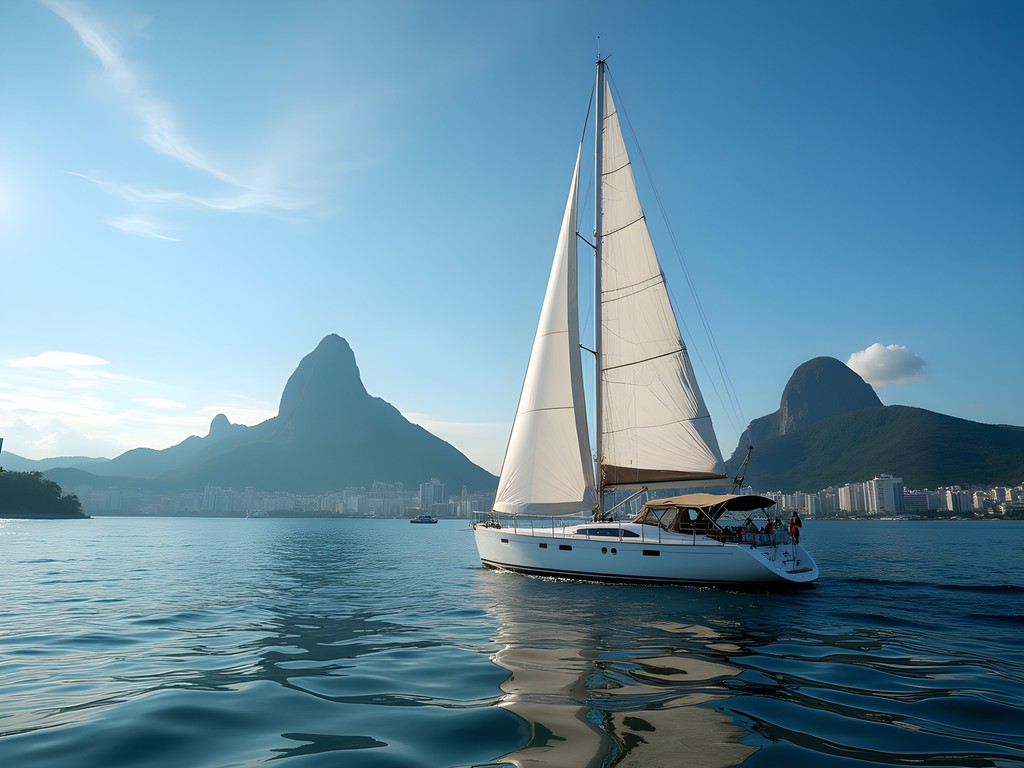
💡 Pro Tips
- Choose smaller vessels (6-12 passengers) for a more personalized experience
- Bring a light windbreaker even on sunny days as conditions can change quickly on the water
- Ask about combined sailing/historical tours that include fort visits for deeper cultural context
Hiking the Transcarioca Trail
My most profound connection with Rio came during a two-day section hike on the Transcarioca Trail—Brazil's first long-distance urban hiking path that spans 180km across the entire city. This ambitious project links diverse ecosystems and communities, creating literal and figurative connections between Rio's fragmented geography.
With local guide Eduardo, whose family has lived alongside the trail for generations, I hiked the section from Barra de Guaratiba to Grumari, traversing coastal headlands, hidden beaches, and protected Atlantic Forest remnants. What makes this trail special isn't just the spectacular scenery, but the way it democratizes access to nature for all of Rio's residents.
"Before this trail existed, many cariocas had no safe way to experience these landscapes," Eduardo explained as we passed through a recently restored forest corridor. "Now schoolchildren from the favelas can walk the same paths as international visitors."
This resonated deeply with my educational philosophy of creating equitable access to transformative experiences. I've since developed a virtual exchange program between my Kansas City students and a Rio school, using the trail as a framework for understanding environmental connectivity.
The winter season offered comfortable hiking temperatures and dramatically reduced the presence of mosquitoes compared to summer months. The trail is well-marked with yellow and black triangles, though hiring a guide provides invaluable cultural context and navigation assistance through the more complex urban sections.
The trail's genius lies in its accessibility—you can hike sections ranging from 2 hours to multiple days, using public transportation to access trailheads. This makes it ideal for travelers with limited time who still want an authentic wilderness experience.
For multi-section hikes, I found my trekking poles invaluable on the steeper descents, particularly in areas with loose stone steps dating back to the colonial era.
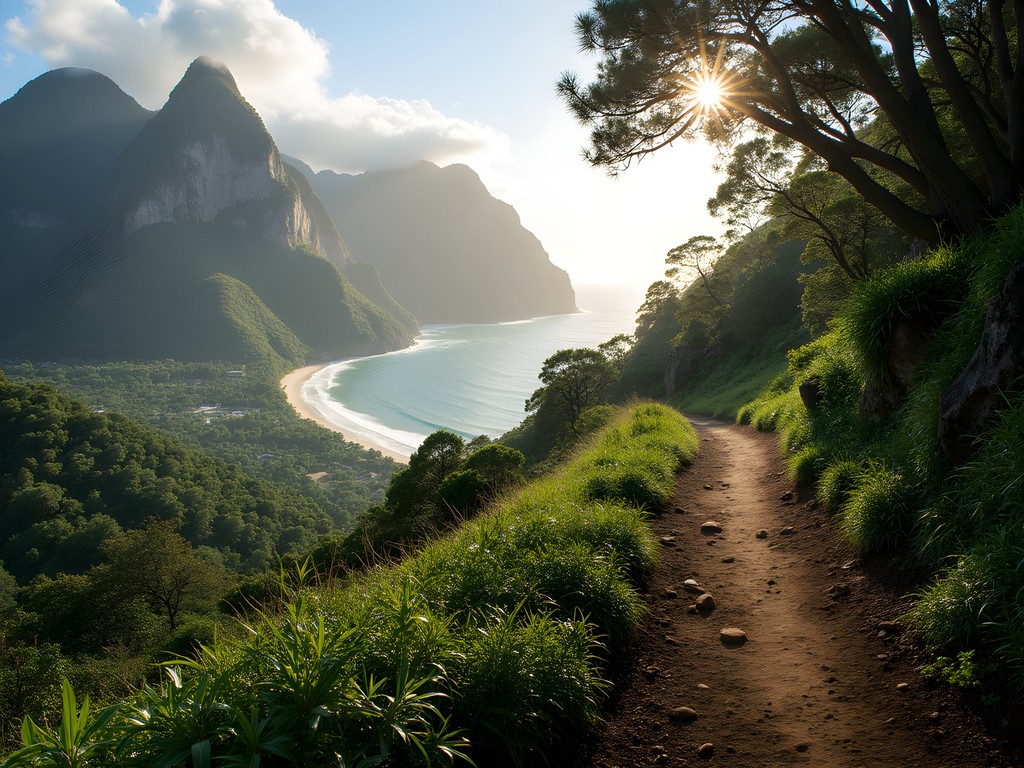
💡 Pro Tips
- Download the Transcarioca Trail app for offline maps and cultural information points
- Pack plenty of water for coastal sections where refill points are limited
- Carry small Brazilian currency for purchasing snacks from local vendors along community sections of the trail
Final Thoughts
Rio de Janeiro's outdoor adventures offer far more than just physical thrills—they provide windows into the city's soul, history, and ongoing evolution. What struck me most was how these activities bridge social divides in a city often defined by inequality. Whether surfing at Arpoador or hiking the Transcarioca Trail, I witnessed people from all backgrounds sharing experiences and spaces in ways rarely seen in other aspects of carioca life. As educators and travelers, I believe we have a responsibility to seek out and support these democratizing spaces. My week of adventures beyond Rio's beaches left me with a deeper appreciation for how outdoor recreation can serve as both cultural preservation and social progress. When planning your own Rio journey, I encourage you to step beyond the postcard beaches—the true heart of this magnificent city awaits in its forests, mountains, and waters, ready to transform your understanding of what urban adventure can be.
✨ Key Takeaways
- Rio's outdoor adventures offer unique cultural insights beyond typical tourist experiences
- Winter (June-August) provides ideal conditions for most outdoor activities with fewer crowds
- Local guides enhance experiences with cultural and historical context impossible to get otherwise
📋 Practical Information
Best Time to Visit
June to August (Brazilian winter)
Budget Estimate
$75-150 per day excluding accommodations
Recommended Duration
5-7 days
Difficulty Level
Moderate

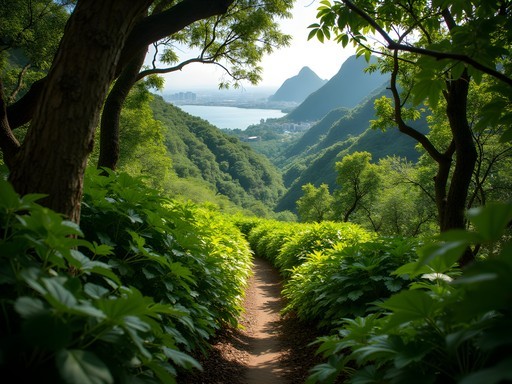
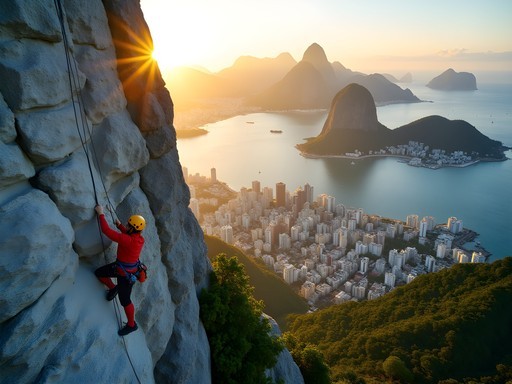
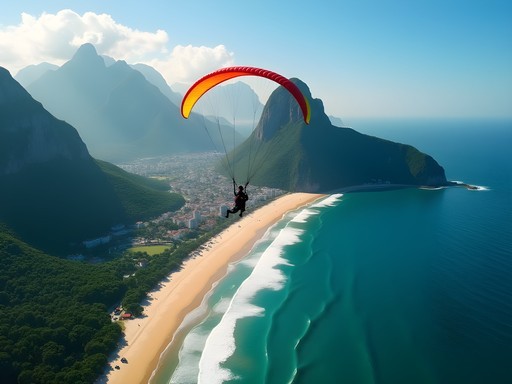
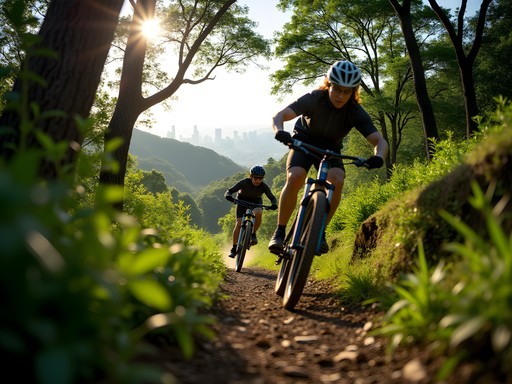

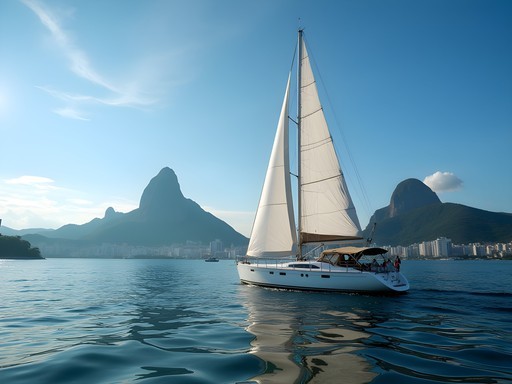




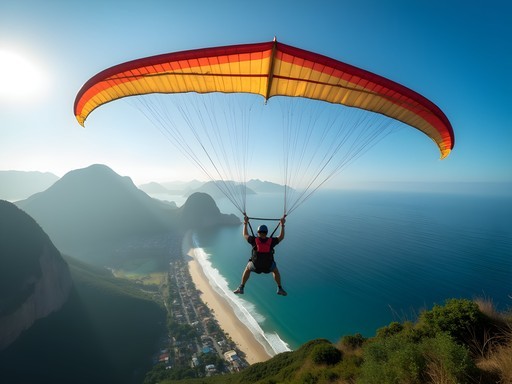
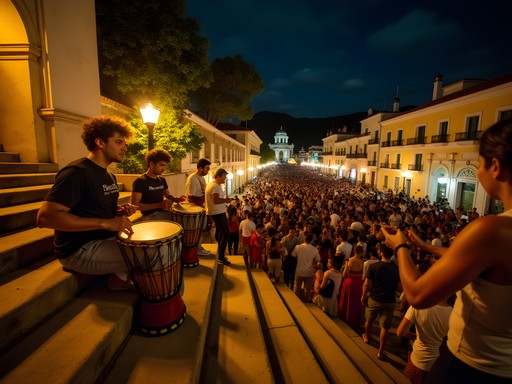
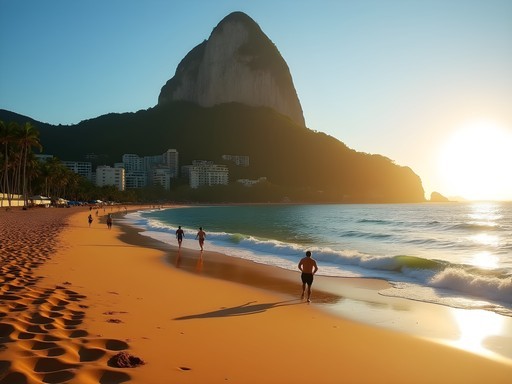

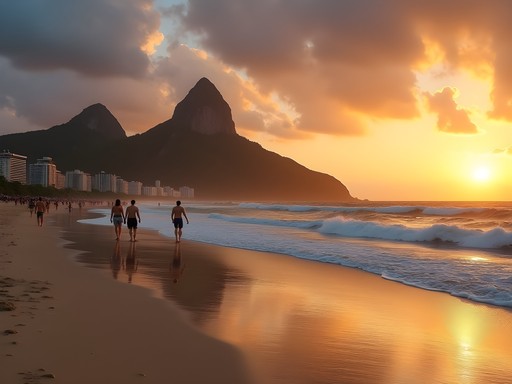
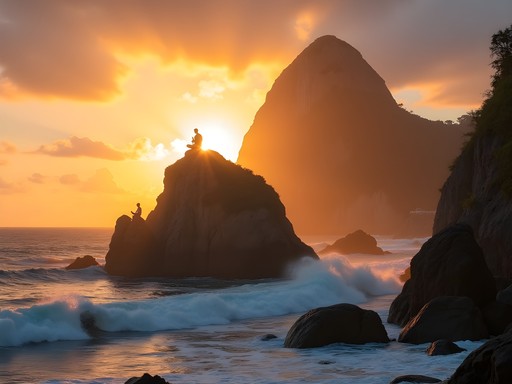
Comments
AdventureMom
We just got back from Rio and did the mountain biking through Tijuca Forest with our teenagers (15 and 17). It was the highlight of our trip! The guides were fantastic and adjusted the route based on our experience level. Pro tip: go early in the morning to avoid the heat and crowds. The bike rental places near the park entrance have much better rates than the ones in Copacabana.
travelguide1600
That's great to know about the bike rentals! Did you book a guided tour or just rent the bikes and go on your own?
AdventureMom
We did a guided tour through Rio Adventure Tours. Definitely worth it since they knew all the best trails and viewpoints that weren't on the maps. Plus they handled all the transportation and logistics.
BrazilFan2023
Those paragliding photos are INSANE! Definitely adding this to my bucket list!
Robert Moreau
Wonderful post highlighting Rio's adventure side! While I typically gravitate toward luxury experiences, I found myself enchanted by Tijuca Forest during my stay at the Copacabana Palace last year. We hired a private guide who took us to some less-visited waterfalls where we had the whole place to ourselves - magical! For those concerned about safety, I'd recommend joining organized tours rather than venturing out alone. The local operators know exactly which areas are best at different times of day. Rio truly is a city of contrasts - from five-star beachfront dining to wild jungle adventures, often within the same day!
Savannah Walker
Claire, this post brings back amazing memories! I stayed an extra week in Rio specifically for the outdoor adventures after initially just planning for the beaches. The sunrise hike to Pedra da Gávea was my absolute highlight - tough climb but the view of the city waking up was magical. One tip for others: the trails in Tijuca can get muddy even in winter, so proper hiking shoes are a must. And don't forget to visit the Vista Chinesa viewpoint - it's less known but offers an incredible panorama without the crowds!
Nicole Russell
This post couldn't have come at a better time! I just booked my solo trip to Rio for February and was looking for activities beyond the typical Copacabana experience. I did paragliding in Colombia last year and LOVED it, so Pedra Bonita is definitely going on my list! Did you feel safe hiking in Tijuca National Park? Any specific trails you'd recommend for a solo female traveler who's reasonably fit but not a hardcore hiker? I'm bringing my hiking boots which have never let me down on previous adventures.
Claire Singh
Hi Nicole! For Tijuca, I felt very safe on the main trails, especially Pico da Tijuca and Pedra Bonita trails which had other hikers around. I'd recommend going on weekends when there are more people or hiring a local guide (which I did for my first hike). The Vista Chinesa trail is also gorgeous and relatively easy. Have an amazing time!
Nicole Russell
Thanks so much for the tips, Claire! Vista Chinesa sounds perfect for me. Did you book your guide in advance or find one when you got there?
Claire Singh
I booked through my hostel, but there are plenty of reputable tour companies online too. Just make sure to read reviews first!
globeblogger
Any recommendations for mountain biking guides/rentals in Tijuca? Would love to try that trail you mentioned.
nomadway
I used Rio Mountain Biking tours - they were great! Around $60 for a half-day tour with all equipment included.
wildadventurer
Those rock climbing pics are epic! Adding this to my bucket list.
travelguide1600
Great post! How did you get around to all these adventure spots? Public transportation or did you need to rent a car? Planning my trip for January and wondering about logistics.
Claire Singh
I mostly used a mix of Uber and public transportation! The metro system is surprisingly good for getting to the main areas, and then you can use ride-sharing for the more remote spots. No need for a rental car unless you're planning to explore way beyond the city.
travelguide1600
Perfect, thanks! That makes planning much easier.
oceanbackpacker
Is winter really the best time to go? I was planning a trip in February (summer there).
wildadventurer
February is super hot but amazing for beach time! Might be a bit intense for hiking though.
Robert Moreau
I've been in both seasons and each has its charm. Summer (Dec-Feb) is perfect for beaches but can be oppressively hot for hiking - expect 90°F+ with high humidity. Winter (Jun-Aug) is milder (70s) and ideal for the outdoor adventures Claire mentions. If you're set on February, just start hikes early morning and bring plenty of water!
nomadway
Just got back from Rio last month and did the paragliding from Pedra Bonita! Absolutely incredible experience seeing the city from above - you can see Christ the Redeemer, Sugarloaf Mountain, and all the beaches in one panoramic view. The instructors were super professional and I felt safe the whole time. If you're on the fence about it, just do it! Definitely bring a action camera if you have one - you'll want to capture that view!
Venture X
Premium card with 2X miles, $300 travel credit, Priority Pass